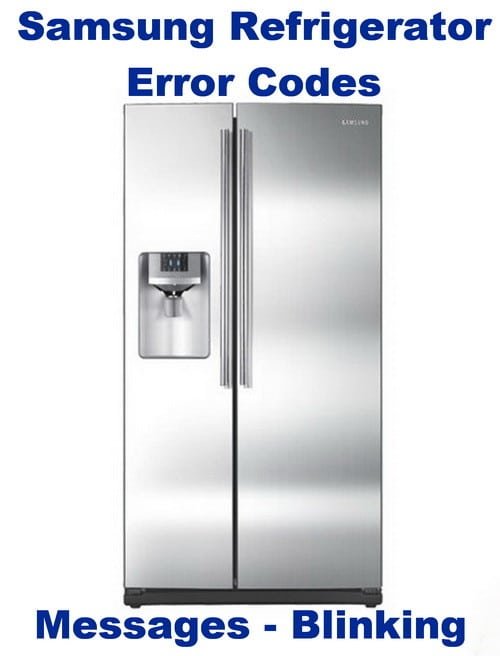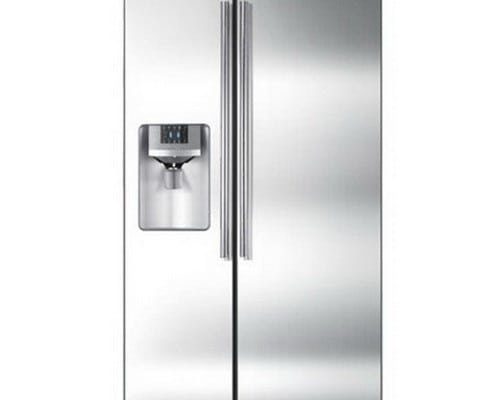
But why reset your refrigerator in the first place? You might be wondering if it’s the magical fix to all that ails your fridge. While resetting can be quite effective for certain glitches, it’s important to remember that it’s not a cure-all. A reset might resolve temporary hiccups—perhaps your fridge needs a breather. However, understanding more about what causes that E1 error code can help you decide whether a reset is the right move or if something more is needed.
Understanding Error Code E1
The E1 error code can appear on your Samsung refrigerator’s control panel and might feel like your appliance is speaking a different language. Let’s break it down into something more understandable. This code typically indicates an issue with the fridge’s temperature sensors. These sensors are like the refrigerator’s way of “feeling” its surroundings—they tell the fridge how cold or warm it is inside. If they’re not working correctly, your fridge might start acting up, thinking it’s warmer or colder than it actually is.
So, why does this happen? Imagine the sensors as the thermostat in your home, which regulates the temperature to keep things comfortable. If the thermostat malfunctions, your home might get uncomfortably hot or chilly. Similarly, malfunctioning sensors can disrupt your refrigerator’s internal climate, causing the E1 error. This could be due to loose connections or faulty sensors, much like the wires of a thermostat becoming disconnected.
Now, is it always the sensors causing the code? Not necessarily. Sometimes, the error code can appear due to other related issues, like glitches in the control board which acts as the brain of the fridge. This essential component directs all the refrigerator’s functions, so any hiccup there can manifest as an E1 error.
The Resetting Solution
Now that you’ve got a grasp on what might be causing the E1 error, let’s talk about resetting. Resetting a fridge is akin to rebooting your computer when it’s acting funny. It’s a simple process that can often resolve minor system hiccups. To reset your Samsung refrigerator, you can usually unplug it from the wall outlet, wait a few minutes, and plug it back in. This action gives the fridge a fresh start, clearing temporary errors that may have caused the E1 code.
Resets can be helpful if the error was triggered by a temporary glitch. Much like giving your computer a break can clear up software issues, resetting can clear out any “stuck” signals within the fridge’s control board. However, if the error persists, it’s likely pointing to a deeper issue, like the aforementioned sensor problems, that a reset alone can’t fix.
So, what’s next if a reset doesn’t do the trick? You’d need to delve a bit deeper into troubleshooting. Checking sensor connections, inspecting for any visible damage, or even consulting a professional might be necessary. Just remember, a reset is a good starting point, not the final solution.
Preventative Measures and Next Steps
Think of your refrigerator as an important member of your household. It works tirelessly to keep your food fresh, so taking care of it can prevent those pesky error codes. Regularly cleaning the coils, ensuring proper ventilation around the fridge, and keeping the door seals clean and tight are all steps you can take to maintain your fridge’s health.
If you’ve reset the fridge and the E1 error still lingers, it could be time to call in the pros. Professional technicians can diagnose the issues more accurately—whether it’s replacing a faulty sensor or addressing any control board problems. Just like you’d call an electrician to fix complicated wiring at home, a fridge expert can ensure everything’s running smoothly.
To avoid future errors, keep an eye on your fridge’s performance. If anything seems amiss—like unusual noises or temperature fluctuations—address it promptly. Taking proactive steps not only extends your refrigerator’s life but also saves you from unexpected inconveniences down the line.
Wrapping it up, resetting your Samsung refrigerator can sometimes resolve the E1 error, especially if it’s a minor glitch. But it’s equally important to dig deeper into potential issues if they persist. With a bit of knowledge and care, you can enjoy a smoothly running refrigerator—keeping your kitchen and life hassle-free!
